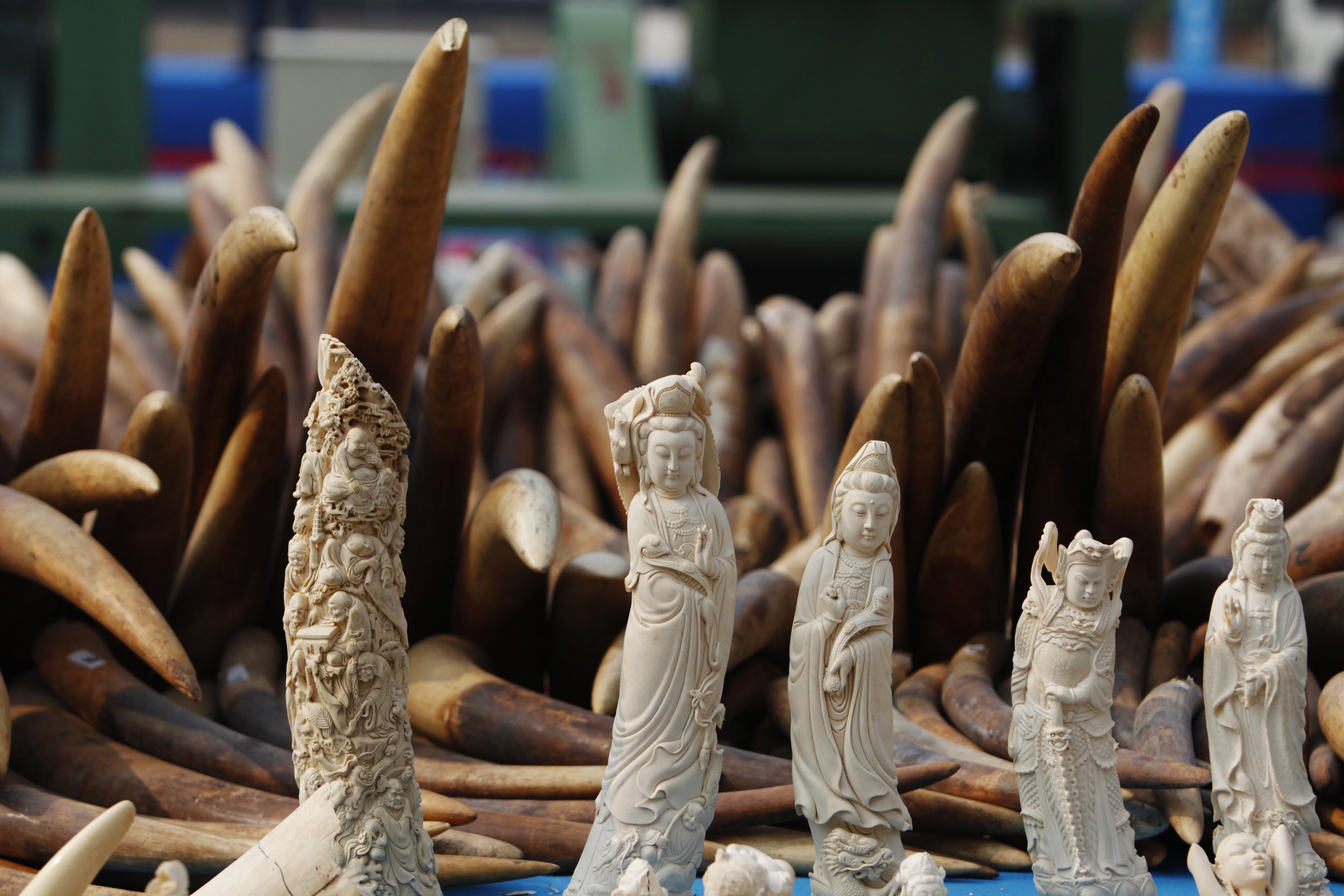HKU scientists develop test to tell elephant and mammoth ivory apart
Scientists at the University of Hong Kong are developing a rapid test capable of distinguishing between elephant and mammoth ivory that could help fight the illegal trade in elephant ivory.
The new method, which measures isotopes in a one gram sample, could return results within a day, much faster than sending samples overseas for age dating or a weeks-long DNA analysis, said associate professor David Baker, from the university’s school of biological sciences. He said: -
“Our hope is that we can help at least distinguish these two things and close this loophole that exists here with the legal sale of mammoth ivory,”
Selling mammoth ivory is legal in Hong Kong and mainland China, but they have both banned trading in elephant ivory. Traders might claim elephant ivory is mammoth ivory to cover up illegal sales, according to global conservation body WWF.
Jovy Chan, the manager of wildlife conservation at WWF-Hong Kong, said that if the new tool was made available at the border, it could make it easier and faster for the authorities to identify smuggled elephant ivory. Chan said
“Before Covid-19 border controls, some smugglers transported large batches of ivory by boat to the mainland, while some individual travellers carried smaller pieces with them through the border,”
She said that before Hong Kong banned the sale of elephant ivory at the end of last year, some traders had told WWF that mammoth ivory did not symbolise good luck in the same way as elephant ivory, was not as durable and carried a smell, and that was why they did not sell mammoth ivory chopsticks. However, such chopsticks are now on sale.
About 20,000 elephants are killed every year for their tusks, which are in high demand in some parts of Asia, according to WWF. Mammoths are long-extinct, but their tusks, preserved in the tundra in places such as Siberia, are dug up from the permafrost.
The team said two of the samples sold as elephant ivory had been identified as mammoth ivory in isotopic tests at the HKU laboratory, and they would now be retested using another method to ensure the accuracy of the new tool.
Baker, who is also director of HKU’s stable isotope laboratory, said the team was aiming to expand its data set from 20 to more than 60 samples to better prove the method’s ability to distinguish between the two kinds of ivory.
“Our isotope lab is a full-service facility,” he said. “If this works, and if the government wanted us to do that test, we could do it at very short notice. This helps to circumvent some of the challenges of not having an age-dating facility nor a rapid test for DNA.”
Baker said it could take months for the authorities to obtain results from overseas radiocarbon age-dating facilities, which determine whether the ivory is ancient or modern. Hong Kong does not have such a machine and one can cost around HK$40 million (US$5.01 million).
Meanwhile, extracting DNA from elephant ivory was complicated and challenging because there were few living cells with DNA in parts that were not close to the root of the tusk, where it was connected to the tissues of the mouth, Baker said.
“When you complicate things with mammoth ivory, a material that is 10,000-plus years old, it gets even harder to extract any usable DNA. It can be degraded,” he said. “We also have to digest all of the ivory to try to liberate some of that organic matter.”
Baker said another way to distinguish between them was to have trained personnel observe the lines and patterns on the tusks, called Schreger lines.
But not all products showed those lines clearly, especially when the ivory had been carved into an ornament, he said. It was also not practical to ask for a product to be sawn in half to show its cross section.
Baker said the new method was minimally invasive to ivory products because only a small amount of sample was extracted with a dental drill.
“For example, for a statue mounted to a base, we can remove it from the base and drill into it from below,” he said. “It doesn’t change the cosmetic appearance of the artwork so it’s not entirely destructive. We only need less than a gram of material, which for ivory is just a stack of powder.”
The researchers would then measure isotopes, atoms of the same element that have different numbers of neutrons. Baker said that was a way of fingerprinting materials to understand where they came from.
“When we looked at the oxygen and hydrogen isotopes, which can be derived from water or the water released from food, we found a very clear separation [between elephant and mammoth ivory],” he said, adding that stable isotopes do not change over time.
“Most of the poached elephants come from tropical areas – the savannahs and the forests of Africa – which are at times arid and at times wet,” he said. “It’s a completely different type of environment to where mammoths roamed, which were high-latitude, colder, more arid environments.
“It’s not really a surprise that we would see these dramatic differences in the isotope ratios of the water that they’re exposed to.”
Main Source: SCMP


